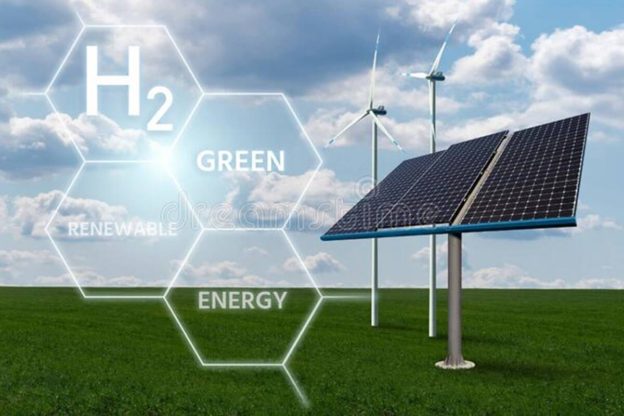New innovations in solar include cells with enhanced durability, the ability to print solar cells on flexible surfaces, panels designed to track the sun’s trajectory from east to west throughout the day, and solar power plants engineered to operate efficiently during nighttime hours.
India has witnessed remarkable progress in the renewable energy sector, particularly in solar and wind energy, encouraged by favourable policies, technological advancements, and strategic investments. At the G20 Energy Transitions Ministers’ Meeting hosted in Goa in July, member countries recognised the importance of specific technologies, minerals, and materials to the clean energy transition. They emphasised maintaining reliable, responsible, and sustainable supply chains and agreed on the need for resilient infrastructure, the plugging of technology gaps, and access to low-cost financing.
Advancements in solar energy
Solar is critical to India’s renewable energy mix. Its cumulative solar module manufacturing capacity witnessed remarkable growth, which more than doubled from 18GW in March 2022 to 38GW by March 2023. As of June 2023, India’s peak power demand reached 223.23 GW, a 4.4 percent increase from the previous year, and the country’s cumulative solar power capacity reached an impressive 70GW. Projections indicate that within the next 3-5 years, India has the potential to achieve 100GW of solar module manufacturing capacity, a milestone that would make the country self-sufficient and generate employment opportunities for millions of people. In a collaboration aimed at accelerating adoption in Maharashtra, a road map was charted for a 500MW tender under the PM-KUSUM-C scheme. The initiative is slated to bring an investment of INR2,500 crore in solar energy, a reduction of 400,000 tonnes of CO2 emissions annually, and support for 100,000 farmers.
New innovations in solar include cells with enhanced durability, the ability to print solar cells on flexible surfaces, panels designed to track the sun’s trajectory from east to west throughout the day, and solar power plants engineered to operate efficiently during nighttime hours. Agrivoltaic farming allows for the cultivation of crops beneath solar panels, maximising land utilisation and helping foster synergies between agricultural and solar energy production processes. Floating solar power plants have also become part of India’s solar expansion strategies. Based on a study conducted by The Energy and Resources Institute (TERI), India’s reservoirs, which span an area of 18,000sq km, hold the potential to generate 280GW of electricity through floating solar panels.
Wind power potential
From April 2022 to January 2023, India successfully generated about 64.5 billion units of electricity through wind energy projects. The government has taken decisive action to introduce offshore wind projects with a combined capacity of 10GW off the coast of Gujarat and Tamil Nadu. The Ministry of New and Renewable Energy introduced a draft policy to repower outdated and underperforming wind turbines, aiming to unlock the full potential of wind projects. Modern wind energy turbines are well-suited to increased power production; able to withstand stormy weather conditions, they are also equipped with condition-monitoring technology, facilitating seamless integration with monitoring platforms. Moreover, these turbines exhibit enhanced capabilities in load management. The Global Energy Alliance for People and Planet (GEAPP), a coalition of philanthropy, government, technology, policy, and financing partners, aids the Indian government in overcoming policy and regulatory barriers to wind energy adoption and integration. GEAPP’s collaboration on clean energy policies applies to all the countries it works in. For example, GEAPP supports Vietnam’s Power Development Plan 8 (PDP8), which aims to more than double power generation capacity to 150GW from 69GW in 2020. The vision is for onshore wind to contribute 14.5 per cent of total power capacity by 2030 (21,880MW out of 150,489MW) with a target of 60-77GW by 2050.
The role of hydropower
India has a huge untapped potential with respect to hydropower, which has the potential to become the country’s largest source of clean energy after solar. According to India Energy Security Scenarios (IESS), hydro plants will contribute 10 percent of the national installed generation capacity by 2047. India holds the sixth position globally in terms of hydropower resources, estimated at around 150GW from large hydropower sources. Earlier this year, India issued guidelines to promote the development of pumped storage projects that set out financial mechanisms and policies to monetise their reliability and flexibility. They also outlined potential tax and land exemptions to help improve the financial viability of pumped hydropower projects.
In conclusion
As India continues to advance in the renewable energy sector, it is positioned to play a pivotal role in the global transition towards a sustainable energy future. The challenges encountered by the sector, including grid integration and storage capacity, are being actively tackled through government initiatives, and India’s achievements inspire other nations to emulate and address similar issues.
https://www.financialexpress.com/business/defence-emerging-trends-powering-indias-clean-energy-transition-3234917/





